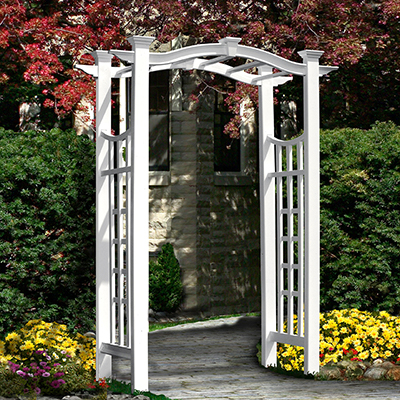How to Grow Grapes

Last updated September 7, 2023
Plant grapevines for delicious grapes you can make into wine, cook into jams and jellies, eat fresh or when dried to enjoy as raisins and currants. It’s easy to learn how to grow grapes when you choose the right variety for your region and give them the growing conditions they need.
This guide will help you learn how to get started growing grapes in your own backyard.
Difficulty:
Intermediate
Duration:
2-4 hours
Table of Contents
How to Grow Grapes in a Backyard Garden
How to Prune Grapevines
How to Grow Grapes from Bare Root Stock
How to Grow Grapes from Cuttings Rooted in Soil
How to Grow Grapes from Cuttings Rooted in Water
How to Grow Grapes from Seeds
How to Grow Grapes in a Backyard Garden
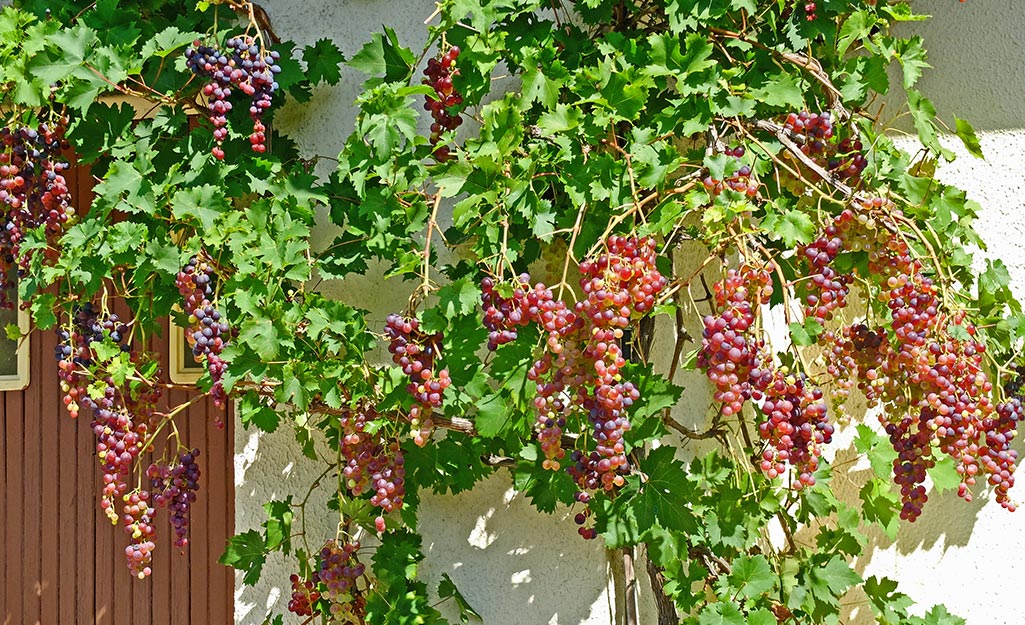
For best results, choose a grape variety recommended for your USDA growing zone. Backyard gardeners usually grow American, European or French-American hybrid grapes. Wild grapes like muscadines (V. rotundifolia), which are native to the southern U.S., are also popular.
Depending on the variety, grapevines can grow in USDA hardiness zones 4 to 10. Backyard grapevines need full sun, well-drained soil, proper pruning and training on a trellis, arbor or other support.
How to Prune Grapevines
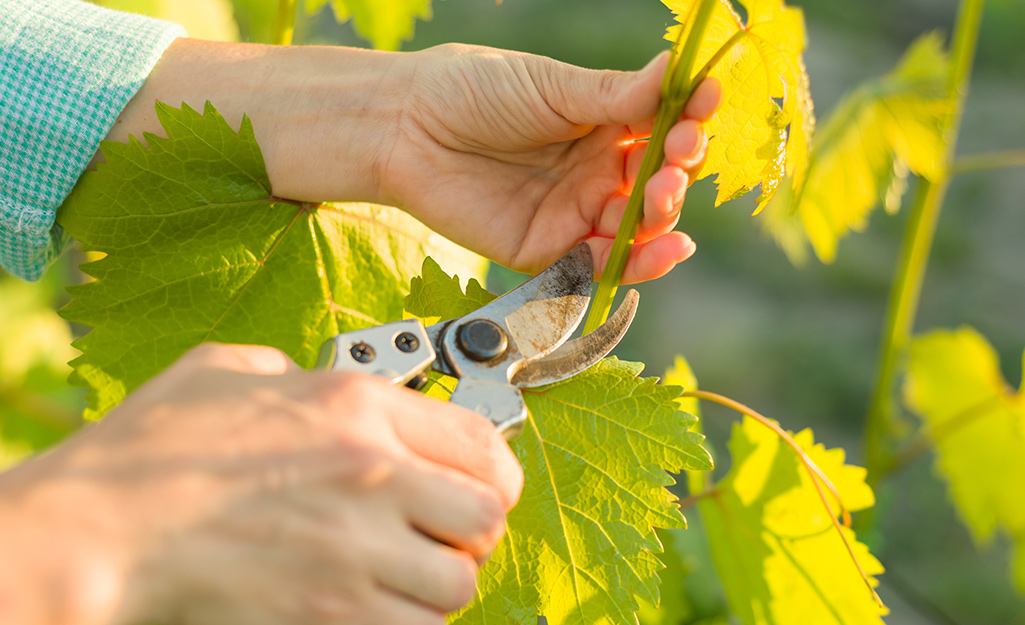
If you’re wondering how fast grapevines grow, the woody vines and lush leaves can grow very fast in the first year. If you mean, “how fast do grapevines produce grapes?”, the answer is that they can take up to three years to bear fruit. Pruning has a lot to do with fruit production.
For best results, prune away all the sprouts coming out of the ground around your grapevines in the first year. Leave only the strongest sprouts and let four of those develop into the plant's main canes.
Use loppers for canes over 1/2-inch in diameter, a pruning saw for thicker canes and pruning shears for small canes.
In the second year, start training the canes as they grow so they attach in two parallel lines along a fence or trellis. That fall, prune away everything except the main trunk and canes. This should leave about one-third of each plant.
In the spring of their third year, the vines should produce the growth needed to make grapes.
How to Grow Grapes from Bare Root Stock

The quickest path to growing grapes is by planting dormant, bare-root grapevines in early spring. One-year-old bare root plants are usually the most vigorous. Read the tag or label to be sure the vines are certified virus-free, then choose a self-fertile variety or grow at least one more plant for pollination.
Before planting, soak the roots in water for an hour or two. Be ready to get them into the ground within 48 hours, so they don't break dormancy.
Work your soil to loosen it and remove weeds, roots, rocks and other debris. Grapevines grow best in well-drained soil with a pH of 5.5 to 7, so you may want to use a soil meter to determine your pH and add any soil amendments it indicates.
Ideally, the amendments should be added the year before planting in order to improve soil health.
Use a shovel to dig holes about one foot deep and one foot wide. Cut off any broken roots on the plants and lower them into the holes. Fill the holes with six inches of soil and tamp it down gently. Then add more soil to fill up the hole, but don't tamp it this time.
Prune off the top two or three buds after planting the bare-root vines and water them in thoroughly. Don’t fertilize during the first year of growth.
In the second year after planting, while the plants are still dormant in early spring, follow the pruning directions in step 2. Pruning helps the vines produce a stronger root system and bear more grapes.
How to Grow Grapes from Cuttings Rooted in Soil
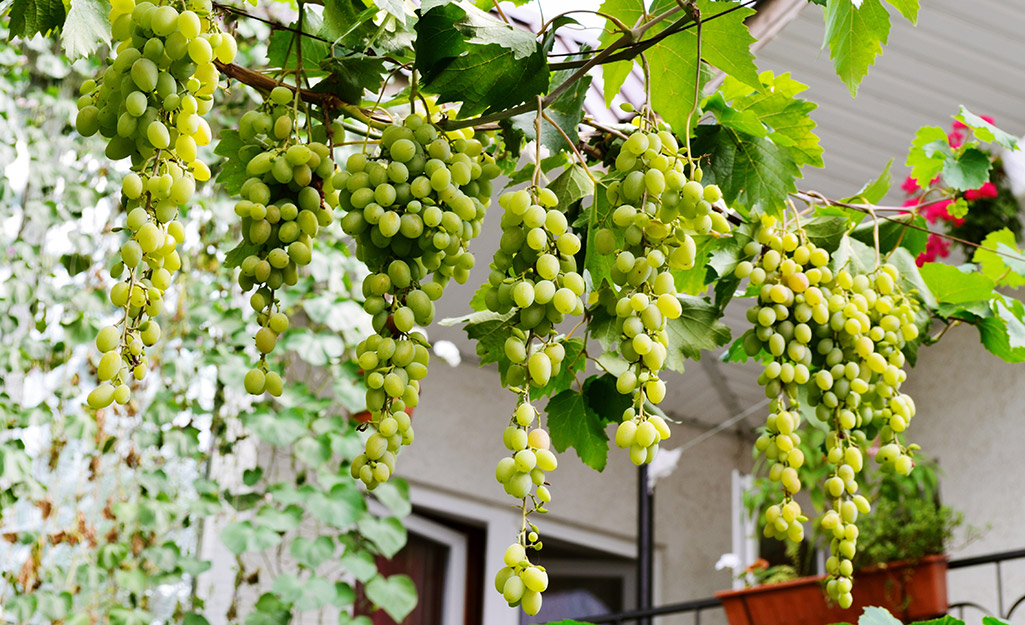
When growing grapes from cuttings, wait until the vines that are known to be good producers, go dormant in late fall or winter. Then find some 6-foot-long, one-year-old shoots (these are usually a little bigger in diameter than a pencil).
Make cuttings about 12 to 18 inches long, each with four buds. Take more cuttings than you need, because some probably won't grow. Start cutting at the base of the shoots, about 1 1/2-inch above a bud, and go up. Cut the bottom of the cuttings flat and cut the tops at an angle. This will help you keep track of which end is the base, because you must plant the flat end in the ground.
Dip the base (the flat end) of each cutting in rooting hormone to encourage roots to grow. Insert the cuttings into the ground as soon as possible. Leave only one bud per cutting above the soil and keep the soil moist. Some cuttings should start growing the next spring.
Cuttings rooted in soil or water can take up to three years to produce grapes.
How to Grow Grapes from Cuttings Rooted in Water
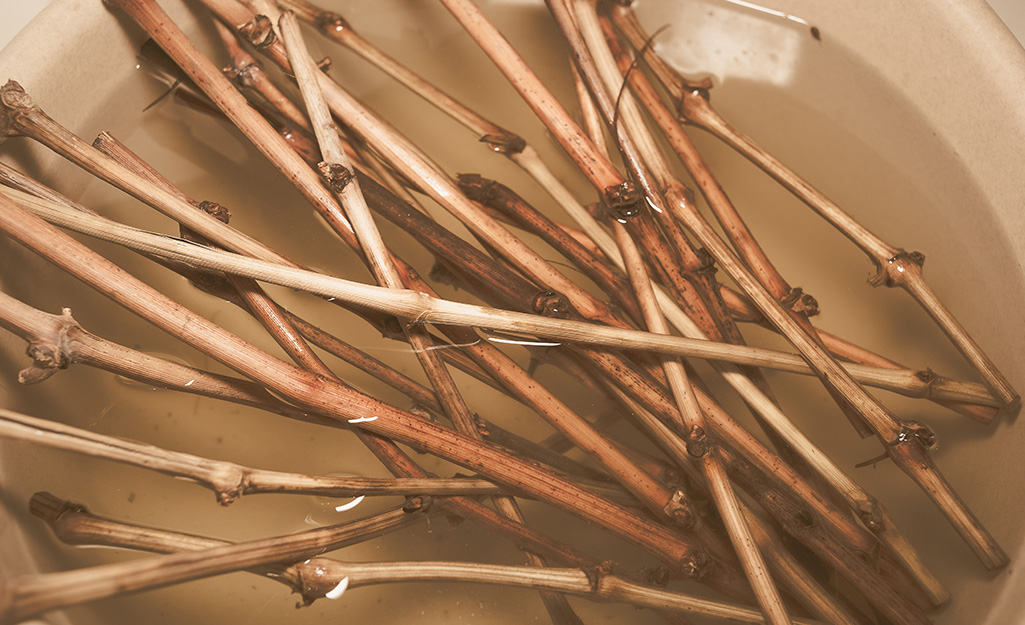
If you prefer, root your cuttings in water instead. Make the cuttings as directed above but keep them shorter, about 8 to 10 inches long. Dip the ends in rooting hormone before you put them in tepid water in a glass. Change the water when it starts to get cloudy and keep the cuttings in it for about six weeks or until inch-long roots appear.
Plant each rooted cutting in a tall, one-gallon container filled with three parts perlite and one part sphagnum peat moss. Leave one or two buds above the potting mixture. Keep the potting mixture slightly moist and transplant the cuttings into the garden when the weather warms up in spring. Plant them at the same depth they were growing in the containers.
How to Grow Grapes from Seeds
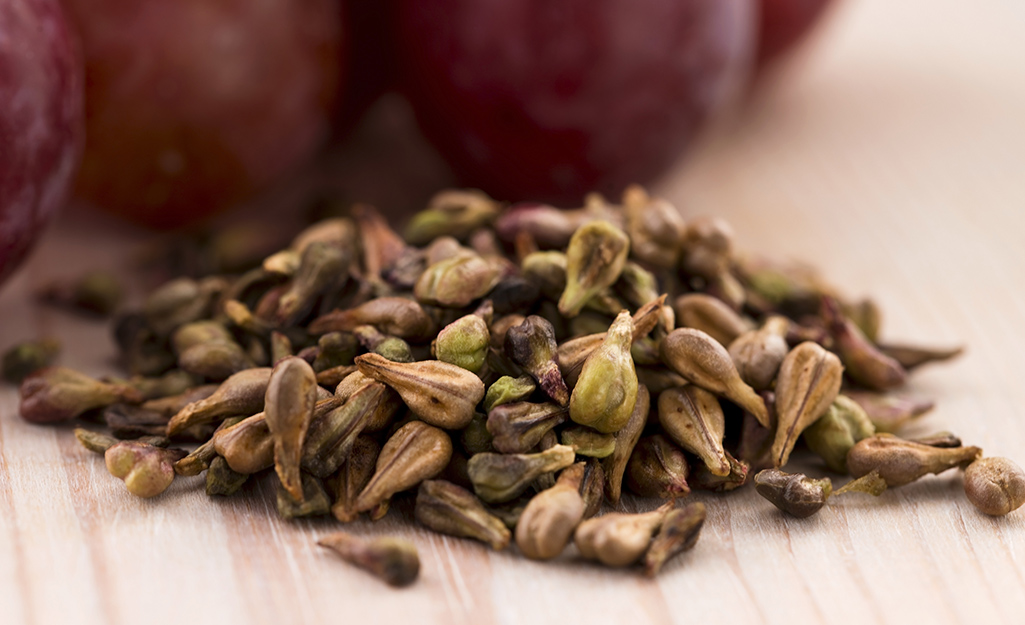
You can learn how to grow grapes from seeds, but germinating grape seeds can be tricky. Start with a variety recommended for your growing region and that has been organically grown. Don’t use seeds from store-bought grapes or hybrid vines, as they may not sprout or produce plants like the original.
Vines grown from seeds may take two to seven years to produce grapes, so research the variety you want to grow.
Soak the seeds in tepid water for 24 hours before planting. Then put them in a small container with some damp peat moss. Use about 50 seeds per tablespoon of peat moss. Put a lid on the container and keep it in your refrigerator at 35 to 40 degrees Fahrenheit for three months. (This is called stratification.)
After three months, plant the seeds three times as deep as their length in a tray of damp, sterile seed-starting mix. Make sure the tray has drainage holes. Sow the seeds every 1 1/2-inch and keep them under a grow light for 16 hours a day.
Keep the seed-starting mix damp, but not soggy. Seeds should sprout in about two weeks, although some can take two months or more to germinate.
When the seedlings have two sets of leaves, transplant them into 4-inch pots. If desired, feed them with a plant food made for seedlings at half-strength. After six weeks, move each plant into a tall, one-gallon pot.
Put the pots outside when the young plants have six more leaves in addition to the first two. Give them a partially shaded spot for a few days and gradually expose them to more sun.
After your last spring frost, plant the young vines in a spot with well-drained, moderately rich soil and full sun. Space them 8 to 10 feet apart. After planting, prune each plant back to the two lowest leaf buds. Water them thoroughly and give them at least one inch of water weekly, if there's not enough rain.
Feed the plants with a balanced fertilizer, such as a 10-10-10, in early spring through autumn, following the directions on the product label. If the vines look healthy, they may not need fertilizer.
Grow Grapes on a Grape Trellis

Grapes grow on woody, perennial vines that can become heavy, so they need support. While they can produce delicious fruits, grapevines are also attractive, ornamental plants you can train on sturdy arbors, fences and trellises.
You can make or buy wood, wire or metal grape trellises for your backyard. Locate them in full sun and on level ground. Train the vines as they grow to latch onto the support.
Use grape trellises that will expose the plants to the sun as much as possible and that have room to prune and harvest from both sides. When planting grapes, avoid putting trellises near structures that cast shadows on them.
More sun on the grapevines means more fruit.
Whether you need the right planters, seeds or potting soil, The Home Depot delivers
online orders
when and where you need them.



